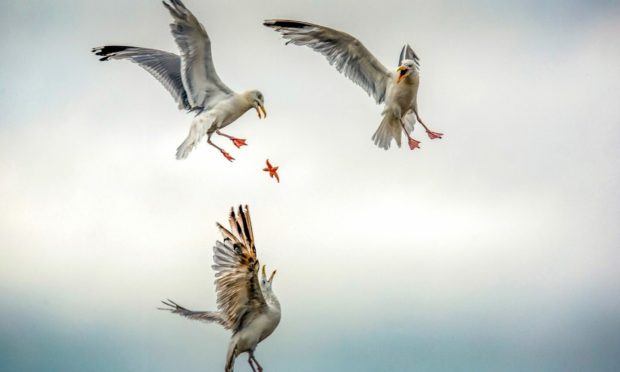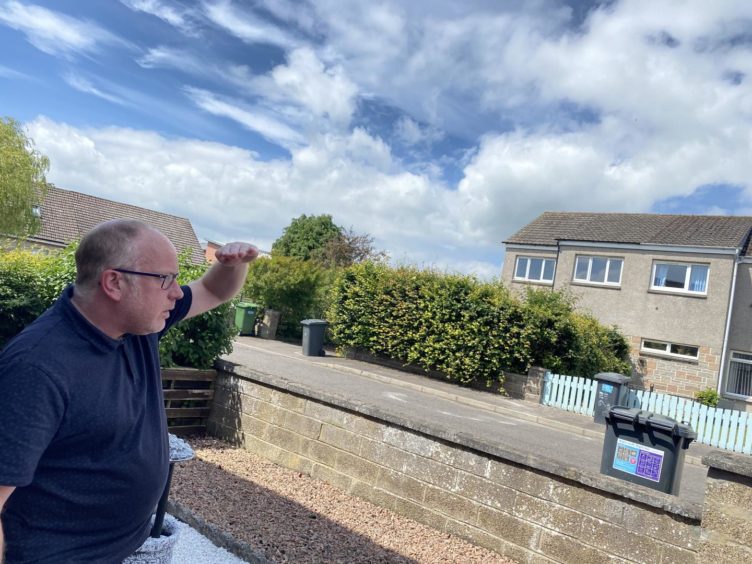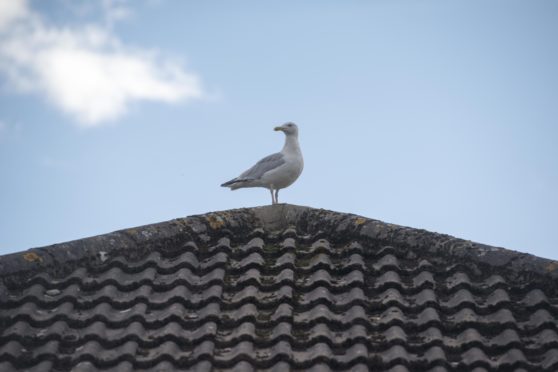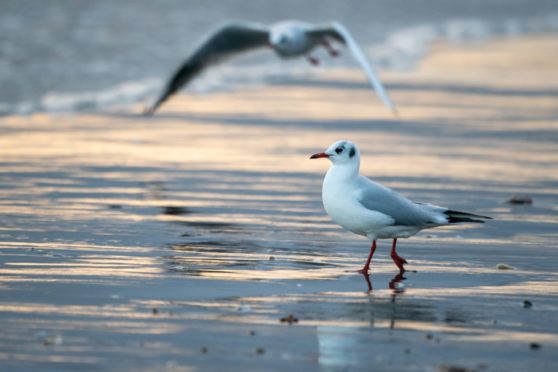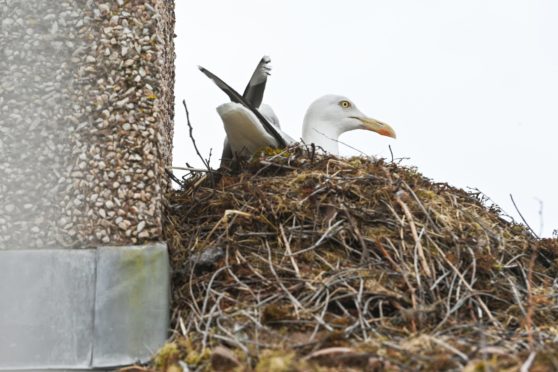I dread this time of year. Neighbouring streets become “no-go” areas, attacks are frequent and the noise is unbearable.
It’s not gang warfare, dangerous thugs or people getting out of hand celebrating the summer days and nights – it’s the gulls.
In recent years, I have noticed more and more of them making their homes on roofs where I live in Carnoustie, Angus.
And it’s the summer months, primarily June and July, when things get really dangerous.
I am not exaggerating.
After a factory nearby was demolished to make way for housing the three streets nearest to where I live have become home to huge numbers of gulls.
They perch on the rooftops and swoop down when they feel the need to go into aggressive attack mode.
In the last three weeks, I have had a number of close shaves with gulls. Fortunately, I am still young and fit enough, at 48, to take to my heels but I worry about older and less able neighbours.
Nesting gulls make problem parents
They are mostly herring gulls or black-backed gulls and they are extremely aggressive during nesting season and when rearing their young – that’s now.
The waves of attacks persist until threats – that’s us – are clear of the area.
Last week I took a different route to the shops in an effort to dodge the winged predators.
It kept me safe but I watched from the other side of the street as a gull dive-bombed a young boy who could only have been aged around nine or 10, before he fled in terror.
And then there’s the noise. The cackling and screeching goes on long into the night and starts up again with the dawn chorus at around 4am.
Do these winged menaces never sleep?
Gulls only protecting their young
I know they are only doing what any species would do by protecting their young, but there must be more the authorities can do.
I’ve lived here for 15 years and it’s only in the last three that the urban gull population has got out of control.
I have been attacked about 10 times since then, but this year is definitely the worst yet, with four to date.
We’re not talking about a city centre street, with overflowing bins and takeaway wrappers on the pavements providing an all-you-can-eat buffet for the birds.
It’s an ordinary residential street where no one is doing anything to make them feel welcome.
So what can be done?
Law dates back to different time
Gulls and their eggs are protected in this country under the Wildlife and Countryside Act 1981, so right away we have a problem.
That preservation was brought in 40 years ago when the urban gull population was much smaller than it is now.
Local authorities and landowners can only take action if gulls are proven to be a danger to public health and safety, and can only do so under a general licence that requires a number of terms and conditions to be met.
Some councils, like my own in Angus, have brought in schemes, such as egg and nest removal.
However, they are no longer permitted to do this after Scottish Natural Heritage, now Nature Scot, amended the licence due to concerns about the declining conservation status.
The local authority now only has the power to act in an emergency and advises installing gull protections measures such as spikes, nets and wires prior to the nesting season.
I guess, for now, we have to figure out what constitutes an emergency – and hope it’s not a toddler being seriously injured or an elderly person falling over as they try to escape.
Looking ahead, maybe those of us who are able need to look out for our neighbours by piling the pressure on Nature Scot and local authorities to come up with a sensible solution that protects humans as well as gulls.
